- How to Spend One Day in Toyama - 25 July 2024
- Where to Stay in Nagano: Good Areas & Hotels to Consider - 20 July 2024
- 3 Mistakes Not To Make If You Visit Narai Juku - 17 July 2024
What should you see in Tokyo? That could be a very long list. The city is huge and full of amazing sights – but, if it’s your first trip here, here’s our suggestions for the best places to visit in Tokyo for first-timers.
Quick Guide: How to Do the Top 10 Sights in 4 Days
Day One: Senso-ji and Asakusa, Tokyo Skytree (with booked jump-the-line tickets), Akihabara
Day Two: Early start at Tsukiji Outer Market, Shibuya Crossing, and Shibuya; walk to Meiji Shrine, then visit Harajuku.
Day Three: teamlab Planets, Odaiba. Late afternoon soak in Thermae Yu, evening in Shinjuku.
Day Four: Tokyo DisneySea or Disneyland (optional)
Ideally, though, I’d book four days to explore Tokyo itself (not including Disney). This allows a little more time at each of our spots and a few extra interesting sights. Check out this more detailed four-day Tokyo itinerary.

Article by Helen Foster. Disclosure: Some links in this post are affiliate links. See our Affiliate Disclosure.
1. Shibuya and the Shibuya Crossing
Shibuya is a vibrant shopping and dining area in Tokyo, full of quirky stores and interesting bars and restaurants. However, most people come here to see and walk across the Shibuya Scramble, the world’s busiest pedestrian crossing. During the busiest times of day, up to 3000 people can make their way across the road at the same time.
The best way to experience it is to watch it from one of the nearby viewpoints (see our favorites here). Walking across it yourself is interesting, and you do need to do it, but you don’t get the scale of it from the road itself.

Each viewpoint gives you a slightly different perspective.
Next to the crossing is the statue of Hachiko, Japan’s most loyal dog (read his story here).
Shibuya is also home to Shibuya Sky, currently Tokyo’s most popular observation deck (click here for our guide to Tokyo views – and get details on how to buy Shibuya Sky tickets).
How to Get to Shibuya
The closest station to the Shibuya crossing is Shibuya which is on the Hibiya, Ginza, and Fukutoshin lines, head to the Hachiko exit to reach the crossing.
How Long to Spend There
If you want to wander around the shops as well as see the sights, then you need half a day here.
The best time of day to visit is after 11 am when the shops have opened. The later it gets in the day, the more people are also on the crossing.
Coming in the afternoon also gives you the chance to visit some of Shibuya’s bars and restaurants. The last time we were there, we ate a blue-coloured soup, danced with a robot and found our new favorite curry joint. See all of these in our guide to eating, drinking and dining in Shibuya.
2. Senso-ji Temple & Asakusa
If you only have time to see one temple on your Tokyo trip, then Senso-ji should probably be it.
Sensoji is thought to be Tokyo’s oldest temple. The story of its history – involving two brothers, a fishing boat and the statue of a deity is interesting (read it and some more history of the temple here).
Located in Asakusa, this Buddhist temple is probably most famous for the huge red Karimaron gate and giant lantern that guard its entrance, but there’s far more to it than that.

Once you pass through the gate, you’ll walk through a long shopping street full of everything your souvenir-hunting heart might desire – from traditional Japanese sweets to prints with Godzilla on. There’s even a shop where you can buy a kimono-style outfit for your dog!
You’ll also find food stalls. Actor Eugene Levy visited one of these when he was in Tokyo filming The Reluctant Traveler (to see which one, check out our guide to all the locations used in The Reluctant Traveler)
Then, you finally reach the Main Hall and pretty red Pagoda.
But Sensoji is just one of many things you can do in Asakusa – the area itself is great for wandering, and it’s also close to Tokyo Skytree, another must-see sight. Check our four-day Tokyo itinerary for a day containing these and some other nearby sights.
Getting to Senso-ji
Take the train to Asakusa station, which is served by the Ginza and Asakusa lines. Take exit 1.
How Long Should You Spend at Senso-ji?
About an hour is enough to walk around the temple and some of the shops – but allow at least half a day here if you want to explore both the temple and the surrounding Asakusa area.
The complex itself is always open, so if you want to try and get pictures without too many people in them, visiting first thing in the morning or at night when the gate and lantern are lit are your best options.
The Main Hall, however, is not open 24/7. You can access it from 6.30am, and it closes at 5pm.
Obviously, if you want to visit the shops, you’ll need to arrive when they’re open, which is around 10 a.m.
A clever trick is to get there before this, head straight to the Main Hall and the rest of the temple complex itself before too many other people arrive, and then do the shops on the way back.
If you decide to visit in the evening, there are also some good bars in Asakusa. See more in our guide to eating, drinking, and sleeping in Asakusa.
Senso-ji is probably the most famous shrine or temple in Tokyo, but it’s not the only one that you might want to visit. Take a look at our guide to the best shrines and temples in Tokyo here.
3. Tsukiji Outer Market
Once upon a time a trip to the fish market at Tsukiji, and its famous tuna auction, was a must-do on every tourist’s Tokyo itinerary, but, then in 2018, the fish market moved to a new sight in Toyosu.
This caused many people to delete Tsukiji from their itinerary, but you absolutely shouldn’t.
While the big fish aren’t there anymore, the labyrinthine alleys of the Tsukuji outer market that circles the old site are filled with stalls and restaurants that still offer fresh-off-the-boat sashimi and sushi for you to try, plus hundreds of other foods.

The Tsukiji website gives a good list of what stalls sell what items so you can highlight your favorites.
It also lists the restaurants and what types of dishes they sell.
There are quite a few different tours of Tsukiji and these can be a good way to visit the best stalls and learn about the culture of the market. The one I picked was this half-day one which was great. You get a good selection of snacks in the market and finish the tour at a local sushi bar for the freshest fish you’ve ever tasted.
How To Get There
Either go to Tsukijishijo Station on the Ueno Line (exit A1) or Tsukiji Station on the Hibiya Line (exit 1).
Tsukiji is technically part of the Ginza district, and you can easily head here afterward. Our Ginza guide gives some ideas of what to do if you do.
How Long Should You Spend at Tsukiji?
About two hours is enough to wander around the market and try a decent number of samples – if you get there early, otherwise, you’ll need to allow extra time for queues.
And there are a lot of queues!
I didn’t go to Tsukiji on my last trip, a first for me, but I went past it at about 11am and it was a zoo – I’d never seen it that busy. So, get there early. The market asks tourists not to arrive before 9am so the stalls can sell to regular customers, but, you can eat in the restaurants as many of these open early.
Most shops close just after lunch, and some close completely on Sundays and Wednesdays.
See more about why we love Tsukiji Market in our longer post.
And if you’re wondering whether to include Toyosu in your plans too, I say skip the market but definitely visit the restaurants – especially if the mention of crowds above has you shuddering as the food here is excellent, but the crowds are far less. See more in our post on whether you should visit Toyosu Market.
4. Tokyo Disney Resort
I know, I know—why would you come all the way to Japan and go to an American theme park? If you’re a Disney fan, you already know one answer; Tokyo DisneySea. This one of the two parks at Tokyo Disney Resort, is totally unique —the only one with it’s theming, a number of rides you don’t see anywhere else – and a whole new land called Fantasy Springs.
Also, if, like me, you don’t live anywhere near the US parks, going to Tokyo is my only chance to get my Disney fix, so I also want to visit Disneyland.

But, there’s also something special about visiting the Japanese parks. Most people who visit the park are locals – and they throw themselves into it. They wear themed and often matching outfits; they know the dance routines for the shows and dance along; they have a blast on the rides – it’s an atmosphere totally different from that I’ve felt in any of the US parks or Paris.
But I grant you, if you’re only after a traditional Japanese experience on your trip, it’s not going to float your boat – but, if you are a Disney fan, factor in a little extra time in Tokyo to visit to the parks.
See other reasons why you might want to allocate extra days to Tokyo in our guide to how long you should spend there.
How to Get There
Tokyo Disney isn’t in the centre of Tokyo but about a 20-minute train ride east of Tokyo Station in Chiba Prefecture. The easiest way to visit the parks is to take the Keiyo Line to Maihama Station and then get the monorail to the parks.
Check out our beginners guide to the Tokyo Disney Parks here for more tips and advice.
How Long to Spend There
To explore the parks fully, you need a whole day in each park—and if you visit these back-to-back, I’d suggest staying nearby (here’s why).
If you only have one day to allocate to Disney, most people will tell you to visit DisneySea. I’m not sure it’s always the right answer, so if you’re unsure which park to visit, take a look at our Disneyland or DisneySea decision guide.
5. Visit an Onsen
Onsens are communal hot water baths beloved by people in Japan. If it’s your first time in Tokyo, it might seem a waste to spend an hour or two sitting in hot water, but, if you’re not going to an onsen resort at another time on your trip, it’s is a chance to experience a true Japanese tradition – plus it can help soothe the aches and pains of sightseeing. You walk A LOT in Tokyo.
There are now two places to enjoy the onsen experience in Tokyo.
You can visit Thermae Yu in Shinjuku or the new Toyosu Senkyaku Banrai onsen next to Toyosu market. The latter has a free footbath on the roof, which is a nice way to recharge if you don’t want to do a full body soak, and very pretty at night.

How to Get To Tokyo’s Onsens?
To visit Thermae Yu, the closest station is Shinjuku Sanchome, Toei Shinjuku Line, Tokyo Metro Marunouchi Line, and Fukutoshin Line. Take exit E1. Or you can walk there from Shinjuku Station.
The Toyosu onsen is located next to Shijo Mae station on the Yurikamome monorail line. It’s also easy to get a bus here from Shimbashi station. That’s how I normally come over here.
How Long Should You Spend There?
I spent about two hours in Thermae Yu as by this point of my trip, I needed a long soak! You could experience it in an hour if you have to – but, I warn you, the warm water is very soothing, and the outside bath which is fed with proper onsen water from Hakone is very nice.
Both onsens are open almost 24 hours, so visiting an onsen can be a good thing to do in Tokyo in the early morning when not much else is open (here’s where to find some more suggestions for that).
There are also likely to be fewer people here first thing in the morning if you are a bit nervous about getting naked with random strangers.
I went mid-afternoon as I needed to soak every part of me that ached, and there were probably about 20 other people there. Early evening is usually the busiest time as people go after work.
The Quick Guide to Onsen Rules
When you use an onsen, there are three essential things to remember…
You enter the baths naked.
You must wash before entering the water – and there’s a special area for this.
No-one cares that you are nude but you!
Once you realize that last one, the wonderfulness that is soaking in hot water is yours to enjoy.
6. teamLab Borderless/Planets
While much of Japan offers visitors a sense of history and traditions of days gone by, Tokyo always has one foot in the future, and that’s why these interactive art exhibits are on this list.
Well, that and the fact that Borderless is one of Tokyo’s most popular tourist attractions and has been voted the most popular museum in the world dedicated to a single artist!
When it first opened, there was nothing else like it anywhere, and people queued for hours to see works like the Forest of Lamps or the Universe of Water.
Even now, with two locations, queues can be very long so you definitely want to book tickets in advance and try and arrive as early in the day as possible.
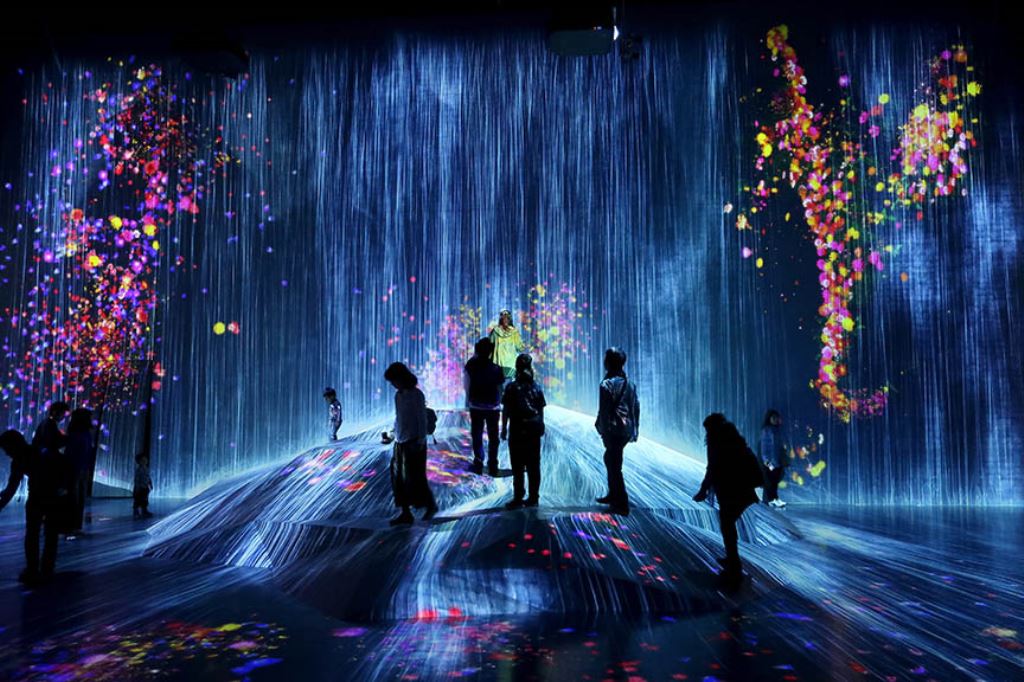
Image from Jonelle Patrick – onlyintokyo.com
teamLab Borderless, is the newer site, it’s bigger and is generally more popular. Booking well in advance is essential to get a good spot. Book them here
If you can’t get tickets or would prefer a quieter location, check out teamLab Planets instead.
It’s smaller than Borderless, but this means it can be easier to get tickets. Buy tickets in advance here.
How to Get There?
teamLab Borderless is located in Azabudai. Nearby stations include Roppongi Itchome and Kamiyacho.
teamlab Planets is located in Toyosu. You can combine this with visiting Toyosu market and the onsen, on combine it with a trip to see some of the fun sights at nearby Odaiba – like the Mariakan Science Museum, the fun Poop Museum, the amazing miniatures in Small Worlds Tokyo or the transforming Gundam
How Long Should You Spend There?
Two to three hours is normal. Try to snag the first slot of the day if you can as there will be fewer people to compete with for photo spots.
Check Out Our Travel Planners
Trying to plan your Japan trip? Visit our Japan travel planner shop on Etsy. We’ve made printable planners containing simple Japan-planning advice and fillable travel planning sheets to help you plan your itinerary, packing, spending etc. If you love travel printables, check out the Japlanease Shop on Etsy.com.

7. Takeshita Street and Harajuku
If you want to indulge in all that is cute (kawaii) in Tokyo, Harajuku is where to come.
While it used to be the in place to see people dressed in cute Japanese styles like the girly Lolita fashion, there’s less of that around now, but you’re still more likely to find fun food trends like giant rainbow candy floss, rainbow cheese toasts, cute animal-shaped ice creams and more.
On my last visit, I tried some new trends with internet superstar Cyber Bunny. She’s now offering tours of Harajuku and other areas of Tokyo, including the most adorable cafe where you get served by a very shy bear. See more about my Cyber Bunny-style afternoon out here.
Also, explore the back streets, where you’ll find lots of smaller clothes shops, rabbit cafes, cute ice cream stores, art exhibits, and more.
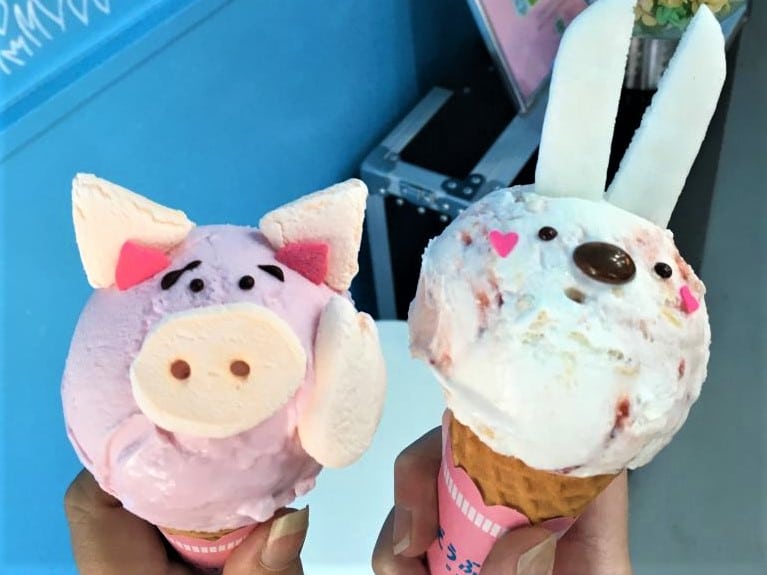
What’s the Closest Station to Harajuku?
Harajuku on the JR-run Yamanote Line.
Take the Takeshita Exit.
The Yamanote Line is included on your Japan Rail Pass if you’re using it in Tokyo (this doesn’t mean you need a Japan Rail Pass in Tokyo though so, check here to make sure it’s the best choice for your trip).
How Long Should You Spend in Harajuku?
At least two hours just in the shopping area – but if you want to try a few trends, visit one of the cute cafes, go shopping, or take photos in a Purikura booth, allow half a day.
Don’t arrive too early, as the shops will not be open. You can start your Harajuku visit with a trip to the nearby Meiji Shrine (see below) to fill the time.
Also, Takeshita Street, the main drag, can be a scrum on weekends. Either just happily shuffle along with the hundreds of other people admiring the view, or come in the week when things are less busy.
8. Shinjuku at Night
While you can wander around Shinjuku’s many shops and restaurants during the day, night is when it looks the best.
The neon lights create that Bladerunner vibe you always associate with Tokyo, the giant Godzilla head starts to roar, the small bars of Golden Gai and Omoide Yokocho aka Memory Lane, and hundreds of other restaurants and izakayas switch on the lights hoping to welcome hungry, thirsty, laughing people.
It’s also home to the famous 3D cat billboard who purrs above the east exit of Shinjuku Station.

One part of Shinjuku, Kabukicho, is often called a red-light district, and yes, while there are some erm, interesting activities inside some of the bars themselves, it’s not a scary or intimidating place, so don’t worry about walking around, or through, here at night.
If you want to be a bit more prepared about what you might see when walking around Kabukicho, especially if you’re traveling with children, have a look at our longer post on what to expect in Kabukicho
The Closest Station to Shinjuku?
Shinjuku Station. This place is mammoth and you need to know which exit is closest to where you want to go.
If you’re not sure, numbers 3,7 and 9 on the East Side are good bets for getting into Kabukicho.
How Long to Spend in Shinjuku?
You should spend at least one evening in Shinjuku soaking up the atmosphere (see our guide to Shinjuku for some ideas).
Shinjuku is one of the best areas to stay in Tokyo, and if you are staying nearby, you can also add a trip to the Thermae Yu onsen to your day, or, during the day, Shinjuku is also home to my new favorite thing in Tokyo – the amazingly kitsch Samurai Restaurant show.

It’s taken over where the old Robot Restaurant left off, and I had an absolute blast when I visited. Take a look at our review of the new Samurai Show to find out more.
Plan Your Day With Our Notepads
Our Japan-themed notepads are perfect for noting down your Japan plans – or, your memories once you touch down.
There are many designs to choose from – from cute to classic.
Check them out at our Japlanease shop on Amazon

9. Akihabara
If you want to get a taste of the ‘geeky’ side of Japan but not get too immersed in the whole thing, Akihabara is for you.
Here, you’ll find anime emporiums selling all sorts of model figurines, stores full of Gachapon machines where you can rid yourself of thousands of yen in small change buying tiny plastic models in little capsules, Maid Cafes where pretty girls will call you Master (or Mistress) and even Kanda Myojin a shine where you can go and pray for the health of your gadgets and gizmos.

The days when you’d also find innovations like robot vacuum cleaners that hadn’t yet been seen anywhere else in the world in the Akihabara shops are no more, but gadget lovers and techies should still check out the Tokyo Radio Department Store complex to see what bits (sometimes literally) they can find in the 60 small shops there.
The famous Sega building above is also no longer there, but video game lovers might want to try the retro selection at Super Potato.
Akihabara is one of the best places in Tokyo to find Gachapons – and, if you don’t know what they are then have a look at our post on one of Japan’s cheapest souvenirs here.
Unless you specifically want to shop for collectibles then Akihabara is one of those areas where you’ll just want to wander around and take in the sights.
Definitely pay close attention to the vending machines, this is where I’ve seen some of the most unusual foods and drinks inside. For more tips on finding quirky vending machines in Tokyo, have a look at our post on small things to do on your trip.
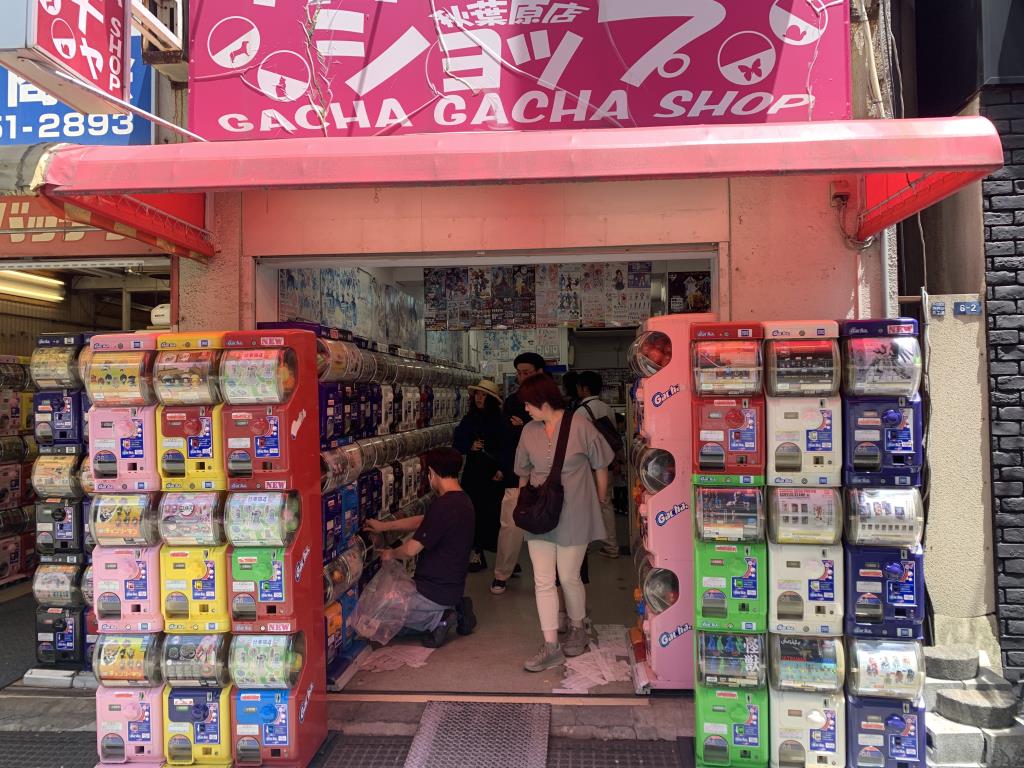
What’s the Closest Station to Akihabara?
Akihabara on the Yamanote line. Take the South exit to Electric Town
How Long Should You Spend in Akihabara?
If you’re a big fan of collectibles or gachapon, you’ll want to spend at least half a day here, if you’re not shopping, then 1-2 hours is enough to absorb the feel of Akihabara.
You can come here later in the day as it doesn’t get overwhelmend with crowds, and the shops are open late. If you come on Sunday, the main streets are closed to traffic.
10. Meiji Shrine and Yoyogi Park
The building of Senso-ji might be more visually arresting than the subtle wooden buildings of the Meiji shrine close to Harajuku, but Meiji is still an important Shinto shrine in Tokyo – and, if you visit at the weekend, it’s also a good place to try and spot the beautiful sight of a Japanese wedding.
It’s a long walk into the shrine, but the peaceful woodland setting gives you a break from Tokyo’s hectic streets. Don’t miss the photo stop of ornately decorated sake barrels close to the entrance.

The Closest Station to Meiji Shrine
Harajuku on the JR Yamanote Line. Take the West exit.
How Long to Spend at Meiji Shrine?
It’s quite a big shrine, so you’ll need 60-90 minutes here, depending on how much you want to explore. You should also allow extra time if you are here on a Sunday.
Meiji Shrine is next to the sprawling Yoyogi Park and while this is a peaceful place to stop any day, it comes to life on a Sunday when many young Japanese go there to practice dance lessons and meet with friends.

Don’t miss The Strangers at the front of the park. This group of rock and roll dancers have been dancing every Sunday in the park for years – they were there when I first went to Japan 14 years ago! And they always attract a crowd. The picture above was taken over 10 years ago, but I still recognise some of the original dancers there today.
If you love shrines and temples, you won’t be disappointed in those in Tokyo – here’s our list of the Top 10 Shrines you might want to add to your Tokyo itinerary.
How to Fit All These Sights Into Your Trip
Our Top 10 Tokyo sights are a little bit spread out, so you probably need 3-4 days to see them all – and enjoy the areas around them.
We think four days is best, and if you have that long, you can find our more detailed four-day itinerary here. It doesn’t allow the extra days for Disney though – you’ll need 1-3 days for that depending on how many parks you want to visit and how much you love the land of the Mouse.
Note, though, that these are Tokyo’s big-ticket sights, and big sights attract crowds. Ideally, you should get to the things you want to see most in your day first thing in the morning and visit others later in the day (remembering that Tsukiji is only open until about 2pm).
What to Read Next
As we mentioned in this post, things like teamLab Borderless need booking in advance so you don’t miss out, and it’s not the only thing that does – if you want to visit one of Tokyo’s amazing themed cafes (like the Pokemon Cafe or the Harry Potter cafe), you need to book these in advance. See more details on how to do this – and get a full list of what you need to book in our post on booking in advance in Tokyo
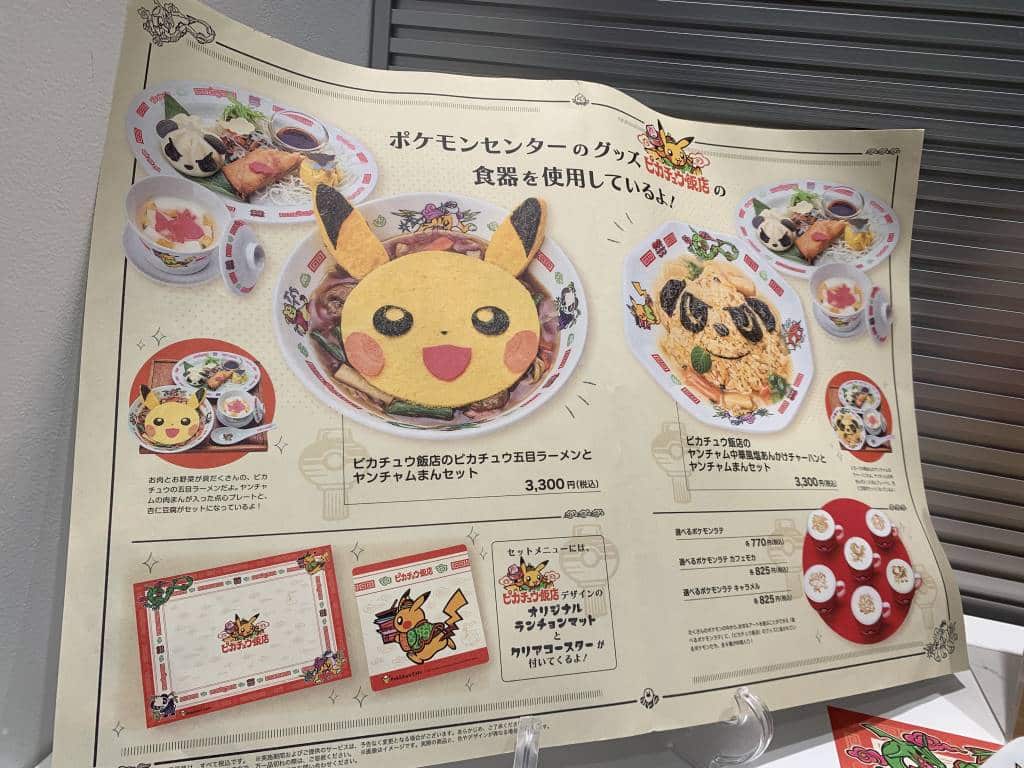
If you want to save money getting around Tokyo, have a look at the Tokyo Subway Ticket. This is valid for 24,48 or 72 hours and, if you’re getting on the metro a lot could save you some money. See all about the pass here.
If you want to freestyle your travel, you’ll probably want to use what’s known as a Suica card. Right now there’s a shortage of these and so, using a digital Suica is becoming more popular – here’s how to put this on your phone.
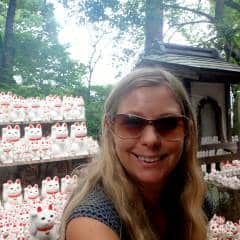
Who Writes This Blog?
My name is Helen Foster, and I’m a journalist and author. My travel articles have appeared in publications including The Australian, RAC Horizons, Jetstar Magazine, Sainsbury’s Magazine, and more.
I’ve traveled to Japan five times before- solo and with my partner – and I’ve just returned from trip six in June 2023. So, everything here is pretty up to date.

